OSAC in Action
OSAC and Industry Collaboration
Interlaboratory studies (ILS) are critically important to standardization efforts, but running them effectively can be a challenge. For example, how many laboratories should participate to obtain statistically significant information? How will participating laboratories be identified and the samples distributed?

The OSAC Seized Drugs Subcommittee is partnering with Collaborative Testing Services (CTS) and ASTM International to execute an ILS program regarding two drug standards currently being revised at ASTM. According to the Seized Drugs Subcommittee Chair, Agnes Winokur, “The goal of the study is to collect and evaluate sufficient data to accurately determine the precision and bias of the test. Precision and bias information in published standards help stakeholders understand what results to expect when operators in different laboratories test the same material with different equipment but following the same standard.”
ASTM International has an ILS program that offers many benefits, including review of the experimental design, assistance in data collection, and statistical processing. Together with CTS, which is assisting with the coordination of sample distribution and data collection, the Seized Drugs subcommittee hopes to conduct its first interlaboratory study in 2020.
Calling all proficiency test providers!
Contact OSAC Program Manager, John Paul Jones (john.jones [at] nist.gov (john[dot]jones[at]nist[dot]gov)) if you are interested in exploring other collaboration opportunities with OSAC.
OSAC at the International Association for Identification
The 104th International Association for Identification (IAI) Educational Conference was held August 11-17 in Reno, NV. The IAI Conference provided an extraordinary opportunity for OSAC to educate the community about the forensic science standards that are currently available, or being developed, and to invite them to participate in the standards development process. Eight OSAC members were there to share information about OSAC and provide updates on the latest activities of their subcommittees. You can view their presentations and highlights on OSAC’s website and LinkedIn page.
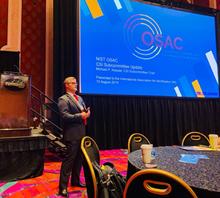
|
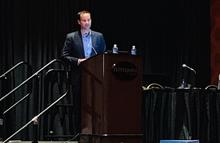
|
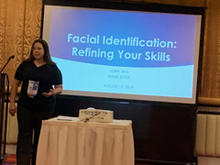
|
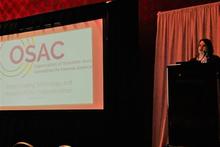
|
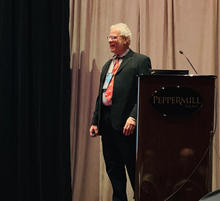
|
OSAC Chairs speaking at the 2019 IAI Conference. From top left: Michael Kessler, Henry Swofford, Lora Sims, Julie Carnes, Toby Wolson. |
OSAC's Geological Materials Subcommittee "Digging In" to Standards
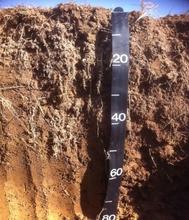
OSAC’s Geological Materials Subcommittee, in collaboration with the University of Kentucky, College of Agriculture, Food and Environment (CAFE) Plant and Agricultural Communications Department, are developing a training video to help educate law enforcement and crime scene professionals on how to collect soils and other geological evidence. This video is intended to accompany OSAC’s Geological Methods Subcommittee draft collection guide which provides details for field personnel responsible for collecting soil and geological material evidence at a crime scene, alibi locations, and/or reference locations.
The training video was shot in September and is currently being edited by the University of Kentucky CAFE Department of Agricultural Communications Staff. Once developed, the video will be made available to the Geological Subcommittee for future use.
OSAC Adds Two New Standards to the Registry in FY 2019 Q4
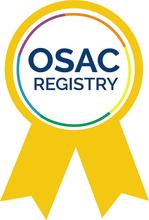
The OSAC Registry serves as a trusted repository of high-quality, science-based standards and guidelines for the practice of forensic science. To be placed on the Registry, a standard or guideline must have been developed using a consensus-based process and have passed the OSAC technical merit review by forensic practitioners, academic researchers, statisticians, and measurement scientists. OSAC encourages all relevant agencies and practitioners to implement the standards listed on the OSAC Registry.
In FY 2019 Q4, the OSAC Forensic Science Standards Board (FSSB) approved the addition of the following two standards for listing on the OSAC Registry:
- ANSI/ASB Best Practice Recommendation 007, Postmortem Impression Submission Strategy for Comprehensive Searches of Essential Automated Fingerprint Identification System Databases, First Edition, 2018. Made effective on the Registry September 5, 2019 and developed by OSAC’s Disaster Victim Identification (DVI) Subcommittee, this document provides guidance to medical examiners, coroners, and investigators regarding the submission of recorded postmortem impressions for comprehensive searches of essential automated fingerprint identification system databases. While several factors affect the successful search of a fingerprint through an automated fingerprint system, one of the most important factors is ensuring the fingerprint is searched through appropriate antemortem fingerprint databases.
- ANSI/ASB Best Practice Recommendation 010, Forensic Anthropology in Disaster Victim Identification: Best Practice Recommendations for the Medicolegal Authority, First Edition, 2018. This document, also made effective September 5, 2019 and developed by OSAC’s DVI Subcommittee, provides guidelines and best practices relevant to the role of forensic anthropology in a DVI operation. Anthropological methods, techniques and principles are typically employed in five primary capacities: 1) during the Preparedness phase of a DVI operation, 2) the Search and Recovery and preservation of remains from a mass fatality incident, 3) at the Triage Station during the initial sorting of material gathered from the field and determination of what human tissue enters the morgue, 4) at the Anthropology Station collecting quality postmortem data from each morgue sample, and 5) as a member of the ID Reconciliation Team, focused on ensuring valid and reliable positive identifications from human tissues. Focus in this document is primarily on the Triage and Anthropology Stations.
For a complete list of the OSAC Registry Approved Standards and the standards under consideration, please visit the OSAC website.
OSAC Celebrates National Forensic Science Week

OSAC Program Office News
2019 OSAC All-Hands Meetings a Success
The 2019 OSAC All-Hands Meetings, held at the Rosen Shingle Creek in sunny Orlando, FL achieved its goals of broadening the knowledge of standards across OSAC’s five Scientific Area Committees (SACs) and 25 discipline-specific Subcommittees (SCs) and providing OSAC members the opportunity to come together to work face-to-face to accelerate the development of standards for the forensic science community.
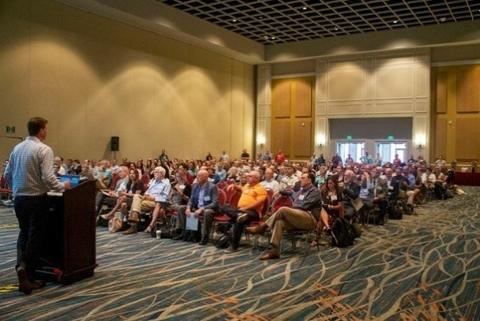
The first week of meetings were held July 9-12 and participants included members of the Chemistry/Instrumental Analysis SAC and subcommittees, the Crime Scene/Death Investigation SAC and subcommittees, and OSAC’s three Resource Committees (RCs).
The second week of meetings were held July 23-26 and included participants from the Biology/DNA SAC and subcommittees, the Digital/Multimedia SAC and subcommittees, and Physics/Pattern Interpretation SAC and subcommittees.
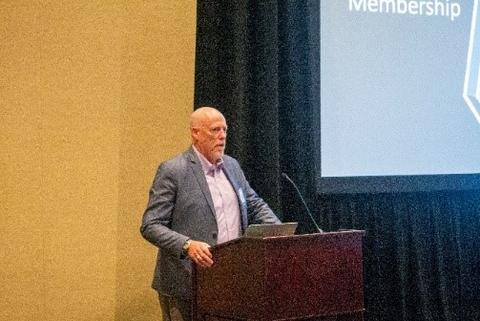
Each week opened with a plenary session, and participants had the opportunity to join in their respective committee meetings, and participate in pitch meetings and open sessions.
The 2020 All-Hands Meetings will be held on March 10-13 and April 21-24 (stay tuned for the location!) and we look forward to bringing OSAC members together again to further advance standards development for the forensic science field.
OSAC Award Winners

A special congratulations to the following OSAC members who were recognized at the 2019 All-Hands Meetings for their contributions:
OSAC Distinguished Individual Service Awards:
- James Carroll for his service to the Firearms & Toolmarks Subcommittee, especially in his role in virtual subcommittees and as the Chair of the Firearms Examinations Task Group.
- Kelly Keyes for her continued service to the Medicolegal Death Investigation (MDI) Subcommittee, especially in her role as the Executive Secretary to assist in the management of the MDI committee’s operations.
- Christopher Krug for his continued service on the Quality Infrastructure Committee (QIC) since 2015, for serving as the Executive Secretary to assist in the management of the committee’s operations, and for leading the Lexicon Task Group.
- Jane Wankmiller for her continued service to the Facial Identification Subcommittee, especially in her role as the Executive Secretary, and for her strong command of the subject matter and the goals and objectives of OSAC.
- Charlotte Word for her continued work to strengthen forensic DNA analysis, for her contributions as a founding and serving member of the Biological Data Interpretation and Results Subcommittee, and for her leadership in the development of numerous standards.
- Diana Wright in recognition of outstanding and extraordinary contributions to the Chemistry SAC, her leadership of the largest subcommittee, Materials (Trace), and her participation on the FSSB Task Group on Technical Issues. Diana also recognized for her perfect meeting attendance, voting record, and ability to wrangle all the extra guest meeting slots.
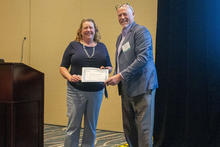
|
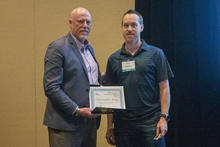
|
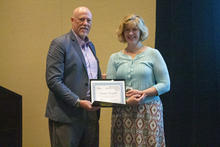
|
|
FSSB Chair Steve Johnson and OSAC Distinguished Individual Service Award Recipients. From left to right: Kelly Keyes, Christopher Krug, Diana Wright. |
||
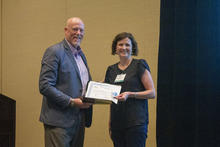
The OSAC Distinguished Group Service Award was awarded to the Interpretation Task Group, Materials (Trace) Subcommittee for tireless efforts to produce an interpretation document to promote consistency within the trace evidence community in communicating the significance of reported results.
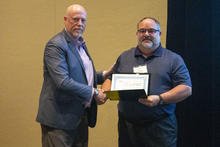
Sharon B. Nakich Award: In honor of our colleague, Sharon Nakich, who passed away in March 2019, this annual peer-to-peer award recognizes an individual who has made significant contributions to promote OSAC's mission through his/her helpful attitude, kindness, teamwork, or behind-the-scene efforts. Christopher Taylor was the first Sharon B. Nakich Award recipient and recognized for his helpful attitude, kindness, and teamwork to support OSAC's goals and mission.
2019 OLSS Meeting Highlights
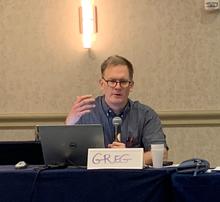
|
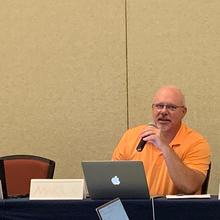
|
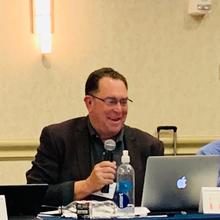
|
| OLSS Members Greg Davis, Mark Keisler, and Chris Plourd engaged at the 2019 OLSS Meeting. | ||
OSAC hosted its annual OSAC Leadership Strategy Session (OLSS) in Tampa, FL on September 17, 2019. This event brought together the FSSB, OSAC’s governing board, and its 25 subcommittee chairs to discuss progress made and strategies for the coming year. Highlights from this year’s meeting include:
- OSAC 2.0 Announced: The OSAC 2.0 transition was presented by NIST, and attendees provided feedback on ways to enhance the transition. The purpose of OSAC 2.0 is to streamline the development of standards and reduce the overall costs associated with OSAC’s large meetings. Streamlining the processes allows interim standards to be developed more quickly without compromising technical rigor. Meeting cost reductions will allow OSAC to support other high priority activities such as process mapping, interlaboratory studies, interdisciplinary activities, and additional support for high performing subcommittees.
- OSAC 2.0 Near Term: Some of the OSAC 2.0 activities will occur in the near term, such as transitioning Resource Committee (RC) members to voting members of subcommittees and revamping the RCs as Task Groups. Embedding RC members in subcommittees ensures that diverse perspectives are included during the initial drafting of documents when legal, human factors, and quality issues can e easily inserted, as opposed to editing after the document is completed. Keeping RC task groups will allow these stakeholders to continue to have a venue to discuss pressing issues informally with their peers.
- OSAC 2.0 Longer Term: Other OSAC 2.0 activities, which will be scheduled to start on October 1, 2020, include a potential change in the number of OSAC SACs and subcommittees and transitioning SACs to voting members of subcommittees, interdisciplinary task groups, or new Technical Review Panels (TRPs). These new TRPs will be set up to perform a review on test methods, practice documents, and conclusion scales as they are completed by the subcommittees. This step will eliminate several process steps that were previously required in OSAC 1.0.
- Google Suite: OSAC will transition from Higher Logic to the Google Suite of applications for its online document sharing and communication platform. The full transition will be completed by December 15, 2019.
- Digital Presence Growing: OSAC’s digital presence is growing with an increase in website views, downloads, and LinkedIn followers, enabling OSAC to reach more stakeholders. As our footprint grows, so does out ability to educate the forensic science community about new standards being developed and championed by OSAC.
In Memoriam: Robert E. Barsley, DDS, JD
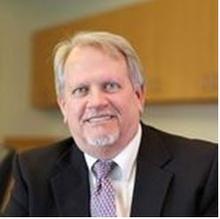
OSAC extends its deepest sympathy to the family, friends, and colleagues of Dr. Robert E. Barsley who passed away on September 28, 2019. Bob was a past chair and member of OSAC’s Odontology Subcommittee since its inception. Bob was a former president and highly honored fellow of the Odontology Section of the American Academy of Forensic Sciences. You can read Bob’s obituary here, provided by Harry McKneeley & Son Funeral Home in Hammond, LA.
OSAC Registry Implementation Corner
OSAC’s mission is to not only facilitate the development of science-based standards and guidelines, but to also encourage the use of those standards throughout the forensic science community. The goal is to have our stakeholders in the forensic science and criminal justice communities embrace the approved standards on the OSAC Registry and implement them into their everyday practice.
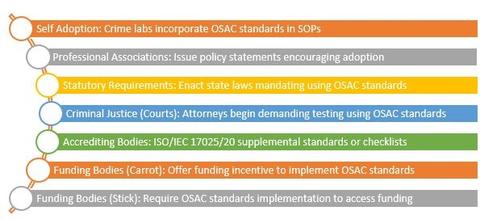
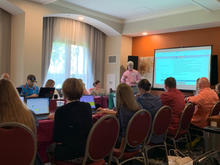
At the July All-Hands Meeting, brainstorming sessions were held with each of OSAC’s 25 subcommittees to identify the benefits, challenges, perspectives, and needs around implementation. A summary of the key findings resulting from the brainstorming sessions and a road map for next steps are available on the OSAC Registry Implementation web page.
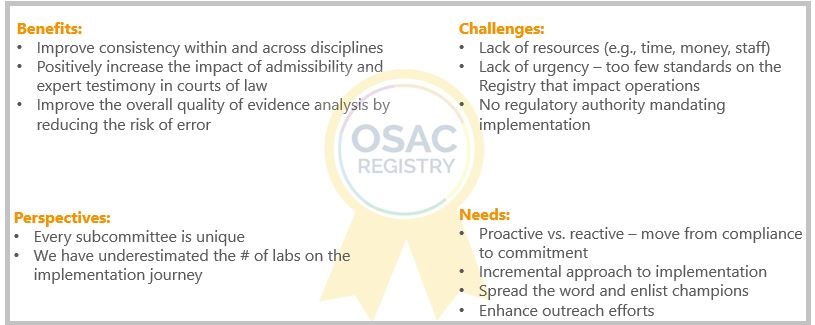
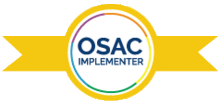
If you are an early implementer of the OSAC Registry Approved Standards, we want to hear from you!
Email allison.getz [at] nist.gov (allison[dot]getz[at]nist[dot]gov) to share your story.
OSAC: A Year in Review
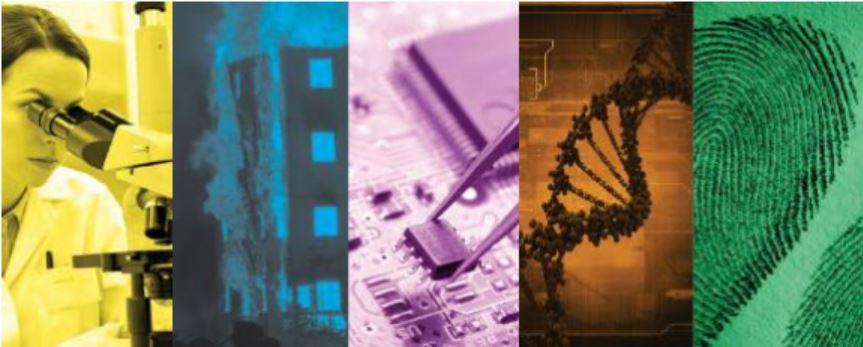
In addition to delivering quarterly updates, the fall edition of the OSAC Newsletter also serves as OSAC’s annual report and provides a review of OSAC’s accomplishments and activities over the past fiscal year (FY), October 1, 2018 through September 30, 2019.
Organizational Snapshot
Administered by the National Institute of Standards and Technology (NIST), OSAC’s purpose is to strengthen the nation’s use of forensic science by:
- Providing technical leadership that facilitates the development of technically sound, science-based standards through a formal standard developing organization (SDO) process.
- Evaluating existing standards published by SDOs for placement on the OSAC Registry.
- Promoting the use of the OSAC Registry approved standards throughout the forensic science community.
- Establishing and maintaining working relationships with similar organizations and other stakeholders.
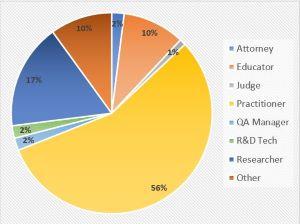
- 550+ members
- 325 affiliates
- 48 states represented
- 245 task groups
- 2600+ applications received
Accomplishments
OSAC has made great strides as an organization over the last year. In addition to the successful All-Hands and OLSS Meetings mentioned above, here are a few other examples of our accomplishments from FY 2019:
- We have continued investment in developing and reviewing over 200 draft standards across 25 forensic disciplines that will improve the current and future practice of forensic science.
- We have made further progress on interdisciplinary projects focused on terminology, training, statistics, and conclusions.
- We have supported the development of process maps within the speaker recognition, DNA, firearms and toolmarks, friction ridge, and bloodstain pattern analysis disciplines. Process maps provide better visibility into forensic processes and highlight which parts of these processes are covered by existing standards and which are not.
- We have further developed the OSAC Lexicon. Subcommittees are working on updating the Lexicon to make sure all source citations are accurate and complete. The OSAC QIC has developed a new process to ensure terms from published standards are updated in the Lexicon. Consensus has been reached on several new “OSAC preferred” terms and there is now a total of 13 OSAC preferred terms that OSAC members are encouraged to use when drafting standards. In addition, since it was launched in March 2018, OSAC members have been hard at work improving the database of over 4,000 terms. Some features of the Lexicon database redesign include:

- The ability to sort/search by subcommittee.
- Allowing for more professional output with symbols, subscripts, superscripts used in scientific terms.
- Additions of hyperlinked terms and reducing duplicate terms displayed by combining them when in use by more than one subcommittee
- Standardization of the citation format for the sources of the definitions.
- We have started executing OSAC’s Registry Implementation Plan by conducting brainstorming strategy sessions with each of OSAC’s 25 subcommittees during the July All-Hands Meetings to identify the benefits, challenges, perspectives and needs around implementation. At the end of FY 2019, there were six laboratories on the “tip of the spear” that have elected to implement the standards on the OSAC Registry.
FSSB Appointments
The FSSB serves as the OSAC governing board and supports the organization by overseeing operations of all SACs, SC, and RCs; approving standards for listing on the OSAC Registry; and facilitating communication within and between OSAC and the forensic science community.
In October 2019, the FSSB elected a new Executive Committee and welcomed three new members to the FSSB:
OSAC Executive Committee Members:
- Steve Johnson, FSSB Chair, Ideal Innovations and IAI Representative.
- Laurel Farrell, FSSB Vice Chair, ANSI National Accreditation Board – Senior Director of Accreditation, and Society of Forensic Toxicologists (SOFT) Representative.
- Sarah Kerrigan, Ph.D., Executive Secretary, Forensic Science Department Chair, Sam Houston State University.
New FSSB Members:
- David Kaye, The Pennsylvania State University, LRC Chair.
- Andy Smith, San Francisco Police Department Crime Lab, AFTE Representative.
- Jason Wiersema, Ph.D., Harris County (Texas) Institute of Forensic Sciences, Crime Scene/Death Investigation SAC Chair.
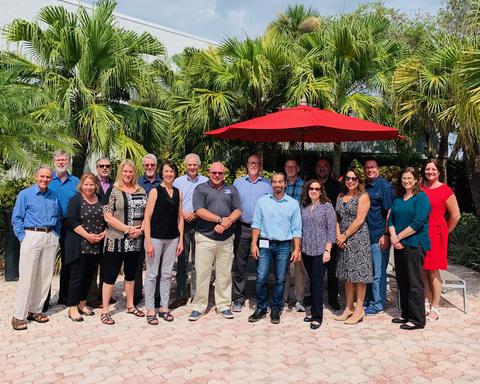
Membership Updates
In February 2019, OSAC entered into its fifth year of existence with greater productivity, improved communications, and deeper engagement with our internal and external stakeholders.
The following individuals were recognized at the September OLSS Meeting for their leadership and efforts to further the OSAC mission and objectives:
- Greg Davis for his service as a member of the FSSB and Chair of the Crime Scene/Death Investigation SAC.
- Susan Hetzel for her service as the Fire Debris & Explosives Subcommittee Chair.
- Mark Keisler for his service as a member and Vice Chair of the FSSB.
- Marc LeBeau for his service as the Toxicology Subcommittee Chair.
- Kim Murga for her service as the Biological Methods Subcommittee Chair.
- Christopher Plourd for his service as a member of the FSSB and Chair of the Legal Resource Committee.
- Sandra E. Rodriguez-Cruz for her service as the Seized Drugs Subcommittee Chair.
- Rodney Schneck for his service as the Footwear & Tire Subcommittee Acting Chair.
- Toby Wolson for his service as the Bloodstain Pattern Analysis Subcommittee Chair.
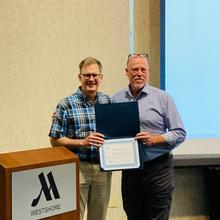
|
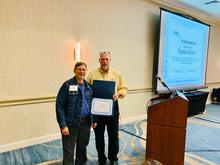
|
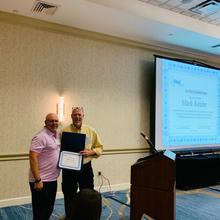
|
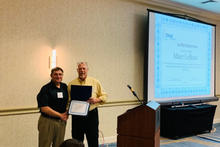
|
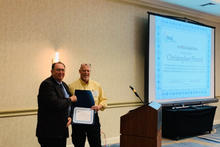
|
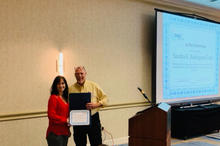
|
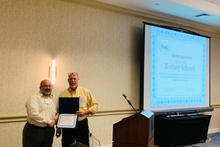
|
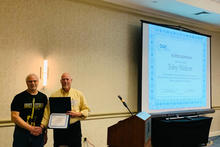
|
|
|
FSSB Chair Steve Johnson and OSAC Leadership Recognition at the 2019 OLSS Meeting. From top to bottom, left to right: Greg Davis, Susan Hetzel, Mark Keisler, Marc LeBeau, Chris Plourd, Sandra Rodriguez-Cruz, Rodney Schneck, Toby Wolson. |
||
The FSSB and OSAC Program Office would like to thank all OSAC volunteers for their time and all the federal, state, and local government agencies, academic institutions, and criminal justice and forensic science organizations that support the OSAC mission by allowing their staff to participate.
OSAC Registry Activity


OSAC works to identify and promote technically sound, consensus-based, fit-for-purpose documentary standards that are based on sound scientific principles. The OSAC Registry contains a list of approved standards that meet these criteria, as determined by OSAC via a transparent process that allows for participation and comment from all stakeholders.
OSAC is proud to have the following 19 Registry Approved documents effective in FY 2019 (ending September 30, 2019):
Disaster Victim Identification
- ASB 010, Forensic Anthropology in Disaster Victim Identification: Best Practice Recommendations for the Medicolegal Authority (effective September 5, 2019)
- ASB 007, Postmortem Impression Submission Strategy for Comprehensive Searches of Essential Automated Fingerprint Identification System Database (effective September 5, 2019)
Facial Identification
- ASTM E3149-18 Standard Guide for Facial Image Comparison Feature List for Morphological Analysis (effective February 14, 2019)
Fire & Explosion Investigation
- NFPA 921:2017 Guide for Fire and Explosion Investigations (effective November 1, 2017)
- NFPA 1033:2014 Standard for Professional Qualifications for Fire Investigator (effective December 22, 2016)
Materials (Trace)
- ASTM E3085-17 Standard Guide for Fourier Transform Infrared Spectroscopy in Forensic Tape Examinations (effective September 11, 2018)
- ASTM E2937-18 Standard Guide for Using Infrared Spectroscopy in Forensic Paint Examinations (effective June 26, 2018)
- ASTM E1610-18 Standard Guide for Forensic Paint Analysis and Comparison (effective June 26, 2018)
- ASTM E2927-16e1 Standard Test Method for Determination of Trace Elements in Soda-Lime Glass Samples Using Laser Ablation Inductively Coupled Plasma Mass Spectrometry for Forensic Comparisons (effective June 5, 2018)
- ASTM E2926-17 Standard Test Method for Forensic Comparison of Glass Using Micro X-ray Fluorescence (μ-XRF) Spectrometry (effective July 31, 2017)
Odontology
- ADA 1088-2017D Human Identification by Comparative Dental Analysis (effective March 7, 2019)
- ANSI/ADA 1058-2010D Forensic Dental Data Set (effective February 14, 2019)
Seized Drugs
- ASTM E2329-17: Standard Practice for Identification of Seized Drugs (effective August 7, 2018)
- ASTM E2548-11e1: Standard Guide for Sampling Seized Drugs for Qualitative and Quantitative Analysis (effective April 3, 2017)
Toxicology
- ASB 017, Standard Practices for Measurement Traceability in Forensic Toxicology, First Edition, 2018 (effective June 18, 2019)
Interdisciplinary
- ISO/IEC 17025:2017 General Requirements for the Competence of Testing and Calibration Laboratories (effective June 18, 2019)
- ANSI/NIST ITL-1:2011 (Update 2013) Data Format for the Interchange of Fingerprint, Facial & Other Biometric Information (effective July 13, 2017)
- ISO/IEC 17020:2012 Conformity Assessment – Requirements for the Operation of Various Types of Bodies Performing Inspection (effective April 18, 2017)
- ISO/IEC 17025:2005 General Requirements for the Competence of Testing and Calibration Laboratories (effective September 27, 2016)
Ongoing Standards Activities
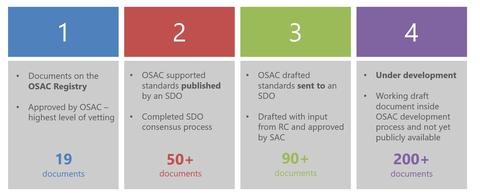
The figures below depict the number of standards and guideline projects that reached particular stages in the development process in each of OSAC’s five SACs and 25 SCs.
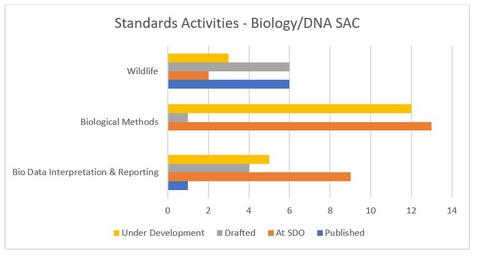
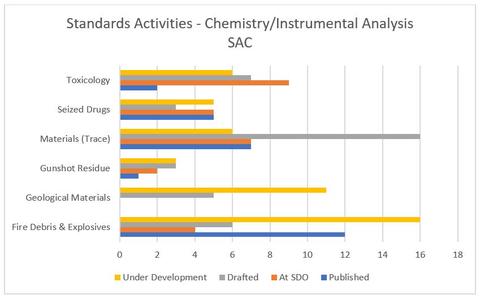
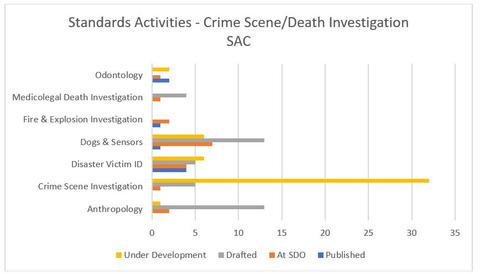
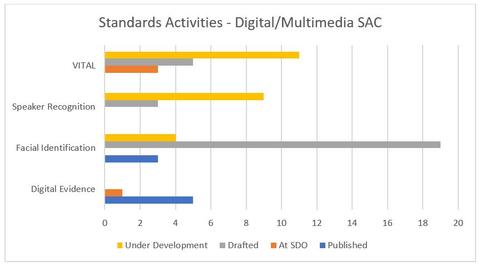
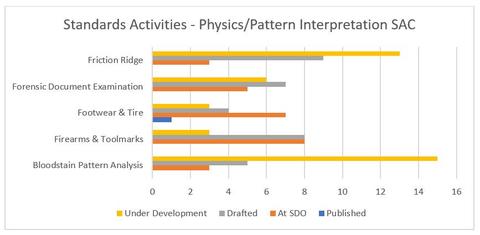
Engagement Activities
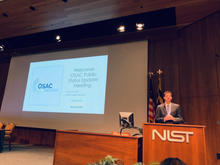
If you were unable to attend this year’s meeting, you can view the recording and presentations on the OSAC website. Also, we encourage you to send any feedback to allison.getz [at] nist.gov (allison[dot]getz[at]nist[dot]gov).
In addition to the annual public update meeting, OSAC participated in other conferences and events throughout the year, including:
- American Academy of Forensic Sciences (AAFS) Annual Meeting – February 2019
- Texas Forensic Science Commission Meeting – May 2019
- American Society of Crime Laboratory Directors (ASCLD) Annual Meeting – May 2019
- Association of Firearm and Tool Mark Examiners (AFTE) Annual Meeting – May 2019
- American Bar Association (ABA) Annual Prescription for Criminal Justice Forensics Program – May 2019
- International Association for Identification (IAI) Annual Meeting – August 2019
- Association of Forensic Quality Assurance Managers (AFQAM) Annual Meeting – October 2019
Final Words
OSAC has made great strides to help achieve and develop technically valid and consensus-based standards and guidelines for the forensic sciences. With over 800 combined members and affiliates representing forensic science practitioners, laboratory managers, academic researchers, measurement scientists, and experts in statistics, human factors, legal, and quality infrastructure, we will continue to work together to develop and promote standards that strengthen forensic science.
OSAC in the News
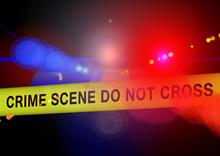 Credit:
Pixabay
Credit:
Pixabay

CSI Training Standard Proposed
(2019, July/August). ASTM Standardization News. Retrieved from https://www.astm.org/standardization-news/?q=update/csi-training-standa…
HFSC Ups Quality Stand
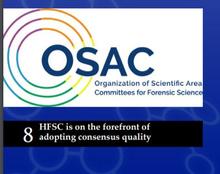 ards
ards

(October 2019). What's News @ HFSC. Retrieved from: https://houstonforensicscience.org/event/5db0c6fd7ETbjternal.pdf
Upcoming OSAC/Major Events
November 2019
12 American Association for the Advancement of Science (AAAS) hosts An Update on Strengthening Forensic Science in the United States: A Decade of Development, Washington, DC
December 2019
3-4 FSSB In-person Meeting, Dulles, VA
February 2020
17-22 American Academy of Forensic Sciences (AAFS) Annual Meeting, Anaheim, CA
March 2020
10-13 OSAC All-Hands Meeting (Chemistry & Crime Scene/Death Investigation SACs and SCs), location TBD
April 2020
21-24 OSAC All-Hands Meeting (Biology/DNA, Digital/Multimedia, and Physics & Pattern Interpretation SACs and SCs, location TBD
Professional Organization Spotlight
Society of Forensic Toxicologists
Update by Laurel Farrell, OSAC FSSB Vice Chair
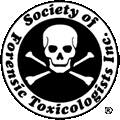
SOFT's objectives are to:
- Provide a forum for the discussion and exchange of professional experiences between forensic toxicologists, and among individuals engaged in the administration of justice, in other governmental functions, and in allied fields.
- Promote the education and training of forensic toxicologists.
- Stimulate research and development in the field of forensic toxicology by providing educational opportunities and contributions to the literature.
- Review and make recommendations on pending or existing legislation that relates to the field of forensic toxicology.
- Promote and assist in providing adequate availability of forensic toxicology services.
SOFT provides a forum for the exchange of information and ideas among toxicology professionals in a mentoring, collaborative atmosphere at its annual meeting. SOFT has a long history of supporting laboratory accreditation and personal certification.
SOFT members actively participated in SWGTOX and now over 45 SOFT members are actively supporting the OSAC initiative through service as members at all levels of the OSAC as well as affiliates on Toxicology Subcommittee Task Groups.
SOFT-sponsored programs, including national and regional workshops, newsletters, technical publications, and presentations at the annual meeting are the primary mechanisms to keep the SOFT membership up to date on OSAC activities. These programs and materials also explain how to become involved as an affiliate or member, how to participate by commenting on standards in development, and how to implement standards that have been placed on the OSAC Registry.
NIST Activities

View the recording from NIST and NIJ’s recent Evidence Management Conference to hear from law enforcement executives, criminal justice practitioners, policy makers and the legal community on the important issues of evidence management.
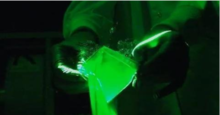
See the recent research our colleagues at NIST have been doing to demonstrate the effectiveness of a new safer approach to test drug evidence.
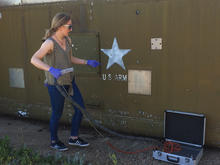
Sniffing out Corpses and Other Signs of Trouble
Screening with the stench of death – a NIST chemist shows how we can detect suspicious chemicals in shipping containers by using the compounds that give decomposing corpses their terrible odor.

Forensic Science Research Innovation to Implementation (RI2I) Symposium
For crime laboratories, transferring forensic science research into practice is a challenging problem. Check out the recording from NIST’s RI2I Symposium where forensic scientists, researchers, and technology transfer experts came together with laboratory professionals, business leaders and other stakeholders to explore ideas for speeding innovation in the nation’s crime labs.

